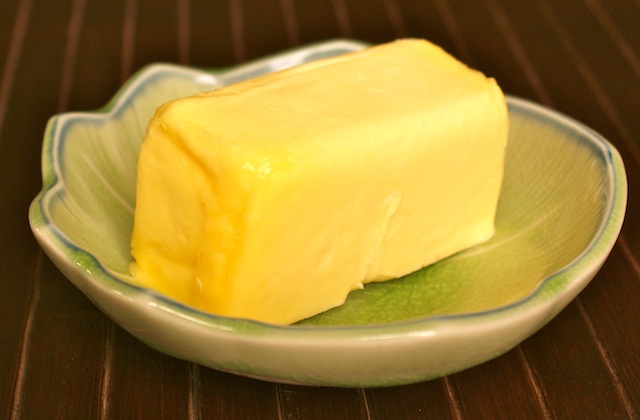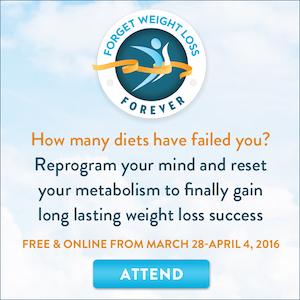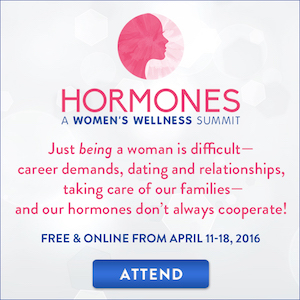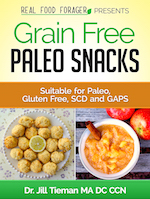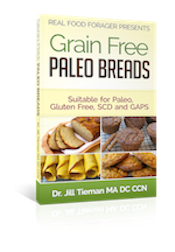Misunderstood and maligned for the last few decades, butter is probably one of the healthiest fats you can eat. As studied and documented by Dr. Weston Price, many traditional cultures held butter up to be a sacred food. “Isolated Swiss villagers placed a bowl of butter on their church altars, set a wick in it, and let it burn throughout the year as a sign of divinity in the butter.” Butter made from the milk of properly raised grass fed cows is indeed sacred.
It is full of fat soluble vitamins A, D and E as well as the mineral activator K2 (previously termed by Dr. Price as Activator X). In fact, true vitamin A is more easily absorbed and utilized from butter than from other sources. Fortunately, these fat-soluble vitamins are relatively stable and survive pasteurization so that even conventional butter is still full of these nutrients.
Traditional cultures put butter on their vegetables because they knew that the vitamins and minerals in vegetables need the activators in fat to be absorbed properly by the human body. I’ll repeat that. Vitamins and minerals need fat in order to be absorbed properly.
Understanding that concept is critical to good health. As a result of the low fat craze of recent years, people are actually in much worse health. In the last three decades in which we have disparaged saturated fats, obesity, heart disease, diabetes and cancer are on the rise — in fact, the first three are in epidemic proportions.
Many of the studies indicating that saturated fats correlates to heart disease are flawed. The researchers did not separately test trans-fats and saturated fats. They lumped them together. We now know for sure that trans fats from partially hydrogenated rancid oils causes oxidation, free radicals and damage to organ tissues, like the arteries and heart.
Another flaw in these conclusions is that when they tested people eating beef, they used conventional grain fed beef. We now know that the beef from grass fed cows has less fat and more importantly, the fat has a lot of CLA (conjugated linoleic acid) that is actually really healthy for us to eat. Conjugated linoleic acid is also found in butter from grass fed cows.
Butter contains nutrients that protect us against heart disease, diabetes and cancer. Vitamins A, D, and E are anti-oxidants that protect against the kind of free radical damage that weakens the arteries and affects the heart. Butter is also a very rich source of selenium, a vital anti-oxidant.
Beyond being potent antioxidants, the nutrients in butter protect many aspects of our health. Vitamins A and D aid in the mineral absorption necessary for healthy bones and teeth.
Butter also has the Wulzen or “anti-stiffness” factor, a nutrient unique to butter. The Dutch researcher Rosalind Wulzen reported that it protects against calcification of the joints, or degenerative arthritis, as well as hardening of the arteries, cataracts and calcification of the pineal gland. Sadly, this particular substance is destroyed during pasteurization. It is only available in raw butter or cream.
Butter is very important for lung development and function. The alveoli are the tiny sacs that end the small airways and they are the structures responsible for gas exchange: carbon dioxide for oxygen. A substance called surfactant lines the alveoli. Lung surfactant is a special phospholipid with 100 percent saturated fatty acids. If there are a lot of partially hydrogenated oils in the diet, the trans fatty acids are utilized in the phospholipids in place of saturated fatty acids and the lungs may not work as effectively. Some research has suggested that trans fatty acids are causing asthma in children. This is another example of how trans fats in place of good saturated fats can diminish health.
There are many other nutrients in butter such as: small amounts of omega 3 and 6 fatty acids; lecithin, which aids in the metabolism of cholesterol and other fats; cholesterol, the building block of all hormones and a “repair” substance; glycosphingolipids which protect against gastrointestinal infections and diarrhea; and trace minerals which are incorporated into the fat membrane of butterfat.
The USDA tells us to eat 5 -7 servings of vegetables a day. But they fail to mention the butter. If your children do not eat their vegetables, put more butter on them. Eat butter. It’s good for you.
Sources:

